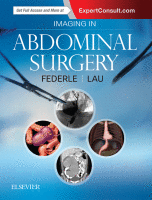Physical Address
304 North Cardinal St.
Dorchester Center, MA 02124

Overview Jaundice (icterus) is a condition characterized by yellow discoloration of the skin and mucus membranes resulting from deposition of bilirubin, a pigmented metabolite of heme. Jaundice is most commonly due to disorders of the liver or bile ducts, but…

Introduction Gastrointestinal bleeding (GIB) is a common clinical problem, the presentation of which may be acute or chronic. GIB is classified as arising from the upper (proximal to ligament of Treitz) or lower (distal to the ligament of Treitz) GI…

Clinical Classification of Functional Constipation Category Features Physiologic and Imaging Test Results Normal-transit constipation Incomplete evacuation; abdominal pain may be present but not predominant feature Normal; may show excessive stool in colon Slow-transit constipation Infrequent stools (e.g., ≤ 1/week), lack…

Overview Diarrhea is a symptom experienced by nearly everyone, generally considered an increase in the volume, fluidity, &/or frequency of stools. Most episodes are transient and self-limited or self-treated with nonprescription medications. However, diarrhea may be persistent or complicated by…

Overview Nausea and vomiting are experienced by almost everyone, and most episodes and causes are self-limited, rarely coming to medical attention. Patients are often aware of the common causes, such as acute viral infections, "traveler's" nausea and diarrhea, or the…

Overview The evaluation of the adult patient with abdominal pain is often challenging for the primary care, emergency physician, or surgeon. While occasional abdominal pain is experienced by almost all adults and is usually self-limited, it can herald serious disorders,…

You’re Reading a Preview Become a Clinical Tree membership for Full access and enjoy Unlimited articles Become membership If you are a member. Log in here